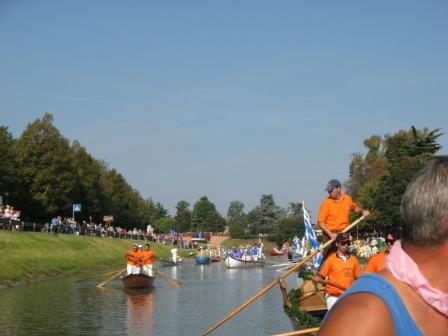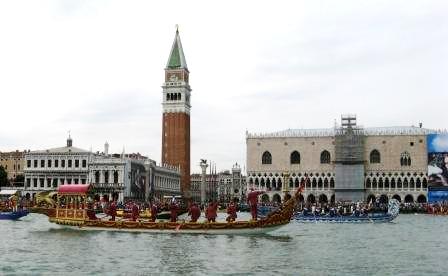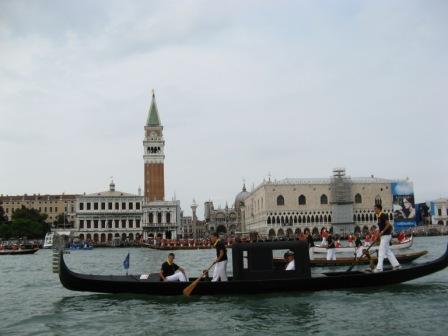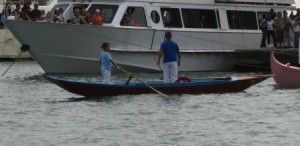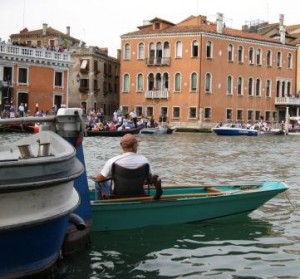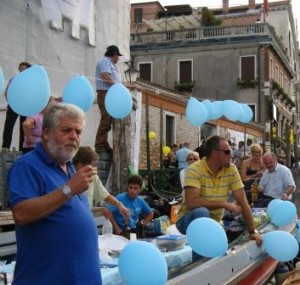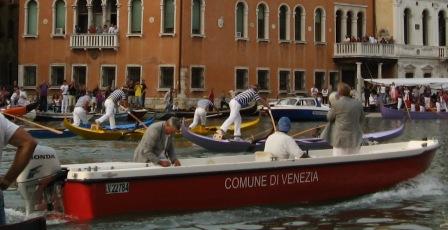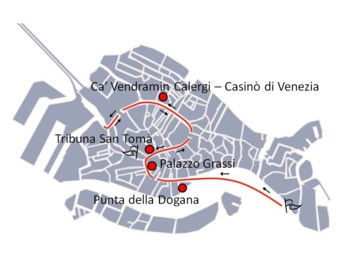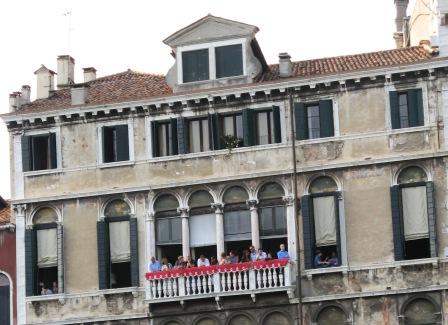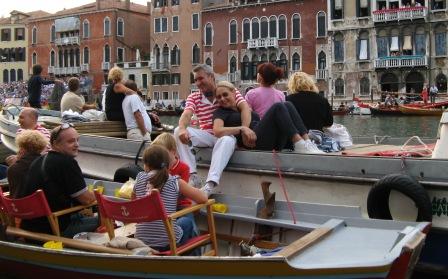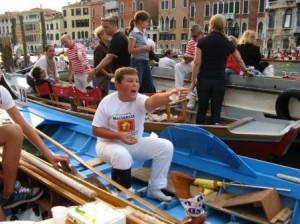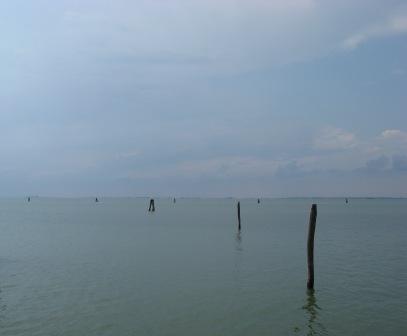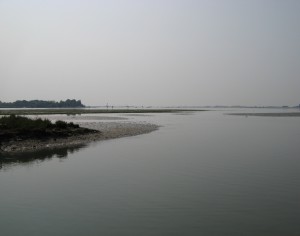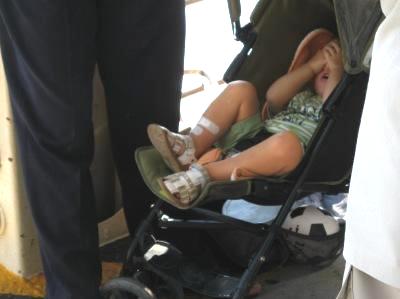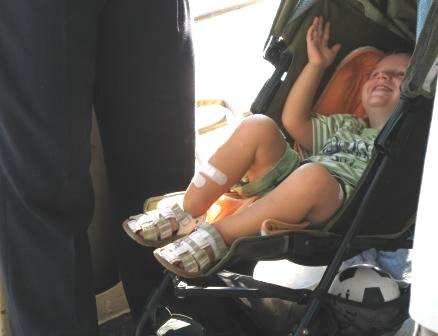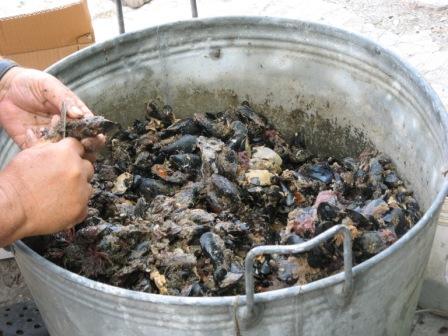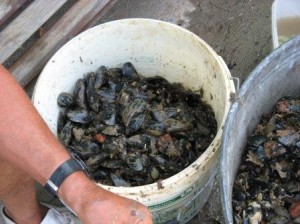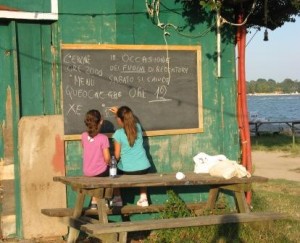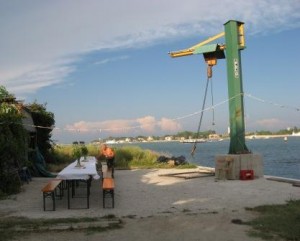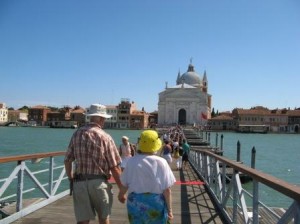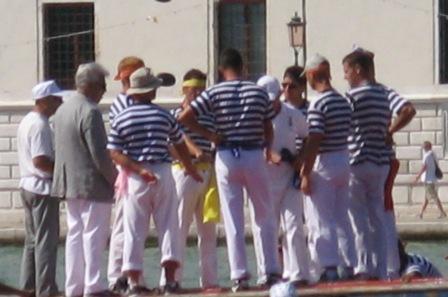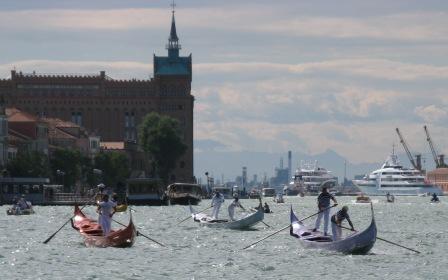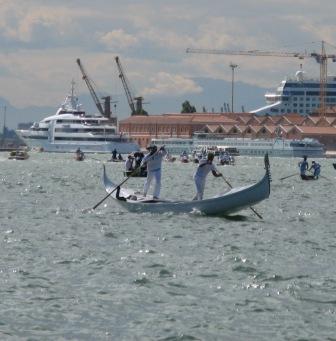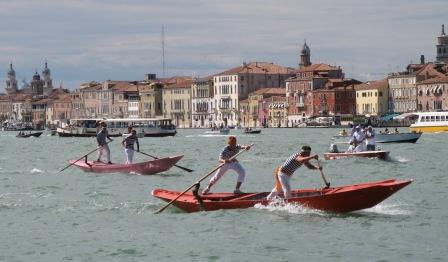Blessedly, there is an antidote to the histrionics of the racing world, and it is composed of the assorted boating events strung across the calendar which are conducted by us plain folks.

One of the prettiest, for the rowers, at least, is called the “Riviera Fiorita,” or “flowered riviera,” which consists, among many other events, a boat procession (“corteo“) which meanders down the Brenta Canal from Stra to the lagoon over the course of one long and (one prays) sunny day — usually the second Sunday in September. Participation is optional, so the number of boats and rowers can vary, but some years have seen nearly a hundred boats.
Two weeks ago was the 33rd edition of this event, which means that by now many of the participants have long since forgotten two of its basic motives, if they ever knew them in the first place.
One, that it was conceived in order to draw attention to the calamitous condition of this attractive and very historic little waterway, which till then was known primarily (and still is) for the ranks of Renaissance villas standing along its banks. There are anywhere between 40 and 70 of these extraordinary dwellings, depending on what source you’re reading; plenty, in any case.
Back in 1977, in the attempt to rally the public to the aid of this stretch of former Venetian territory, a few local organizations engaged a number of the fancy “bissone” and their costumed rowers from Venice in the hope of drawing some spectators, raising awareness and concern for the river’s plight, and so on. As you see, the plan worked.
Second, that the event is intended to recall (“evoke” would be impossible for anyone today even to imagine, much less pay for) the corteo which was held in July of 1574 to welcome Henry III, imminent King of France, King of Poland and Grand Duke of Lithuania, on his approach to Venice.
Henry’s visit inspired all sorts of memorable incidents; every time you’re reading about the 16th century hereabouts, he keeps turning up. The magnificence of the entertainment provided by all and sundry over the week he spent in the Doge’s territory makes it a little hard to remember that the basic purpose of his visit was to ask the Doge to lend him 100,000 scudi, without interest. Next time you want your buddy to spot you a twenty, see what happens if you ask him to organize a boat procession in your honor. And a couple of masked balls,while you’re at it. But then, your buddy probably isn’t the only thing standing between you and the Spanish Empire.
Then this thought crosses my mind: If the Doge had had any notion that some two centuries later the republic would be ravaged, wrecked, and exterminated by a Frenchman, maybe he would have thought twice about lending him the money and giving all those parties. One of countless useless afterthoughts gathering dust in my brain.
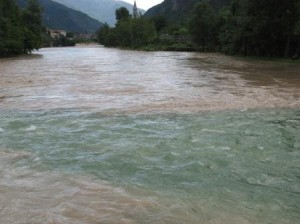
So why is there a Brenta Canal (“Naviglio del Brenta”) when there’s a perfectly good Brenta River? Because the river, which springs from the lake of Caldonazzo in the foothills of the Alps near Trento, and wends 108 miles (174 km) southeastward till it reaches the Venetian lagoon, is too unruly and too silt-laden to have been permitted to continue its traditional path to the sea which was, in fact, the Grand Canal.
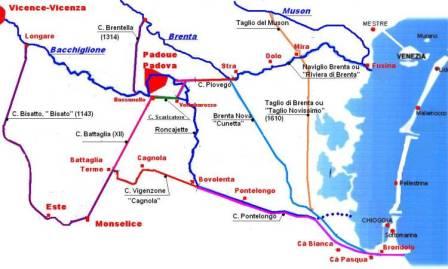

The Venetians had been fiddling with the river’s course since the 1330’s, and by the 17th century had diverted the main river south, to debouch into the Adriatic at Brondolo, leaving a more docile little arm of the river, plus several crucial locks, to use as a direct connection between Venice and Padua. It was perfect for the transporting of all sorts of cargo in barges towed by horses, some of which cargo included patrician Venetian families with lots of their furniture shifting to their summer houses/farms for as much as six months of partying.
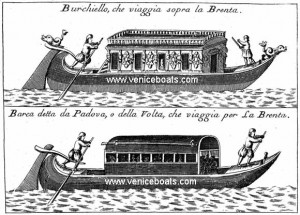
That’s the short version.
This waterway has now come to style itself the Riviera del Brenta, sucking up new streams of tourism by promoting its amazing collection of villas. These vary in size and splendor, from the monumental Villa Pisani at Stra (yearning to matchVersailles, or at least Blenheim) to many elegant and winsome mansions — my favorite, the Villa Badoer Fattoretto — down to a ragged assortment of deteriorating properties whose history deserves something better than what they’ve been doomed to suffer.
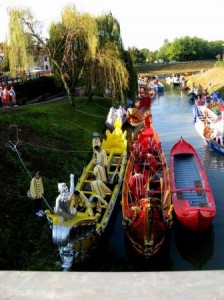
The boats, fancy or otherwise, were towed upstream from Venice on Saturday. Sunday morning we took the bus to Stra, where we joined the throngs getting themselves and their boats ready to depart. We were on a slim little mascareta, just the two of us. At about 10:00 (translation: oh, 10:30) the procession moved out.
The sun was shining, the air was cool, the spectators were happy, and I was feeling pretty good myself. We had 17 miles (27.3 km) to go, but by now I knew what the stages would be, so I was prepared not only for the effort of rowing (not much) and the effort of not rowing (strenuous).
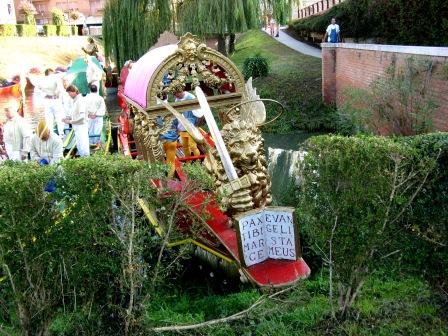
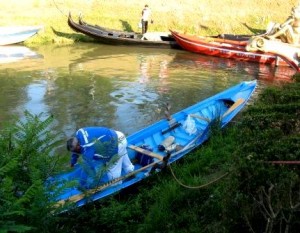
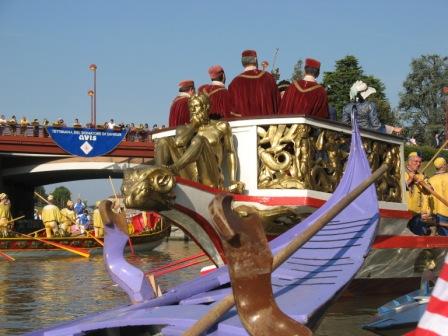
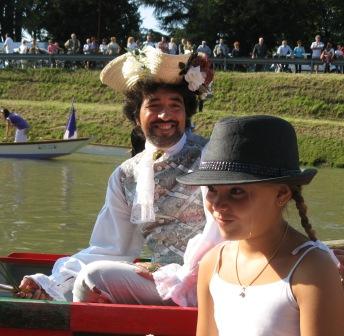
And we're off!
“Not rowing”? What do I mean? If we were to row at top speed, bearing in mind that we’re going with the current — slight as it may be — we could theoretically make the trip in three hours. But speed isn’t the point, and there is also the factor of those three pesky locks and three pesky revolving bridges we to have to pass through. As in: Wait to be opened for us to pass through. Wait for everyone else to catch up so we can all get moving as a group again. No stringing out the procession, it loses all its charm if we’re not together.
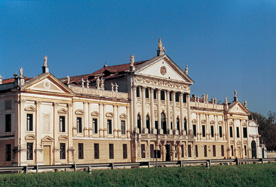
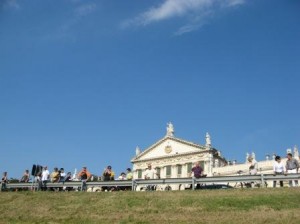
Here’s what I love about this event: The families clustered along the shore just outside their gardens, where picnic/barbecues are in full swing. I made a game of counting the number of houses we passed from which the perfumed smoke of ribs grilling over charcoal was billowing. When I got to five I gave up, because I knew I wasn’t going to be getting any and it just made me hungry.
Kids, dogs, people on bicycles, babies, fishermen, little old ladies — they’re watching us but I think they’re hundreds of times more fun.
People clapping just because we're rowing? What a great idea for a day out.
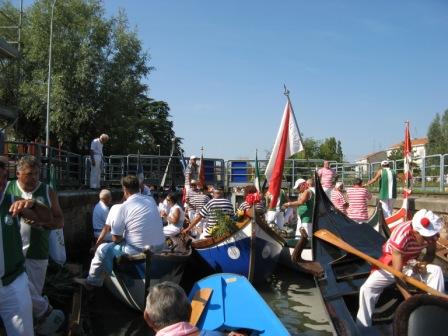

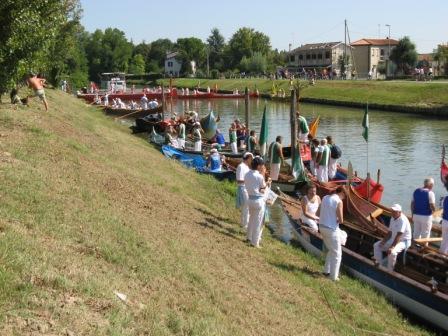

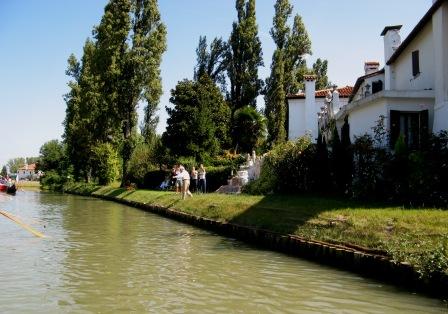
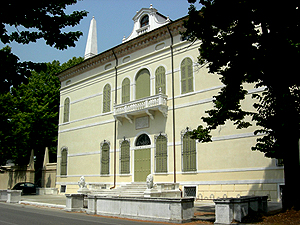

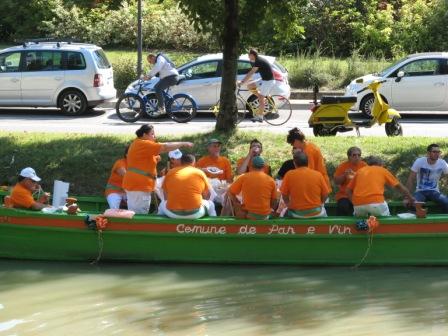
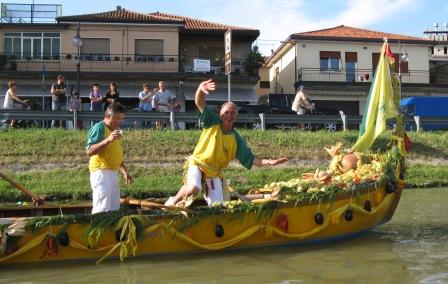
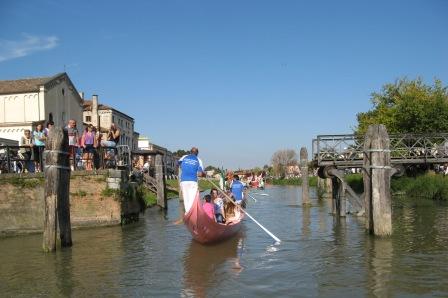
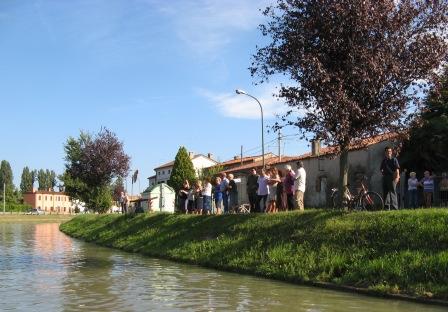
Here’s what else I love: Passing the Villa Foscari “La Malcontenta.” Not only is its elegance and repose something especially beautiful when we pass in the dwindling afternoon, when the sun begins to descend and the light warms to honey and amber. Reaching this emerald curve also means we’re almost at the end, an idea which is gaining appeal with every bend in the channel.
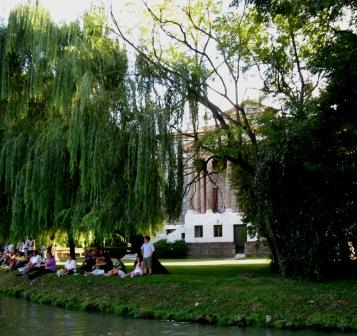
Here’s what I don’t love: The aforementioned locks and bridges, not in themselves but because of the sort of frenzy that overtakes people trying to squeeze their boat in when there obviously isn’t enough space for a toothpick. They start to get tired and cranky, and maybe they’ve had one or two glasses of wine (it could happen) and so these little solar flares of emotion begin to overheat my own sense of benevolence toward my fellow man.
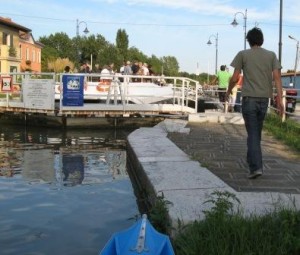
Here’s what I especially don’t love: Wind in the lagoon. It has happened more than once that by the time we were leaving the river at Fusina and heading into open water, we were facing a wall of wind. Which brings waves. Which means just when you really want it all to be over, you have to seriously get to work rowing.
In 2001 — a date branded into my brain — there was so much weather that the trip to the Lido in the 8-oar gondolone which normally would take an hour took three times that long. Doesn’t sound so bad? Maybe not now, but we had no idea when it was going to end, if ever, as we were struggling through the tumult, crashing along, the boat stopping every time we went into the trough between the waves, of which there were many. I also lost my oar overboard. Having to retrace lots of waves we’d just conquered in order to recover it is not a memory I revisit with any pleasure.
You might think that this kind of experience would really build your muscle mass, and I suppose it does. I counted several whimpering new ones the morning after. But what it really toughens up is your mental mass. Mental stamina, some level of fortitude you never needed till now. Plain old grit. You’re out there and suddenly realize you’ve completely run out of the stuff and you’re still not home? You’ve got to make more grit right there. There is no alternative.
One of those nights we were rowing back (it’s always getting dark in these return voyages, which adds to the dramatic element) in the six-oar caorlina with four teenagers who hadn’t done much rowing. I was in the bow, so I couldn’t see anything but night ahead of me. Rowing, rowing… It felt like we were rowing in a sea of cement, pushing against a brick wall. And as I rowed, I gave myself comfort in the only way I could: Swearing a series of oaths in my mind, more sincerely than any juror with both hands on the Bible, oaths which I fully intended to voice to Lino whenever we made it to shore, and calling on the angels, prophets and martyrs as my witnesses, as follows:
“Forget my name. This is the last time. I’m never doing this again. This is insane. I hate this. Why am I here? What was I thinking? Forget my name. This is the last time…..”
I can’t remember how long ago that was, and well, I’m still doing it. So much for my oaths, and I think my witnesses have all gone home.
But this year the return row was heavenly. We were towed, with ten other boats, from the last lock at Moranzani out into the lagoon. When we got as far as the Giudecca, at about 7:45 PM, we untied our little mascareta from the others and rowed through the darkness back to the Remiera Casteo, at Sant’ Elena. The other end of Venice, in other words.
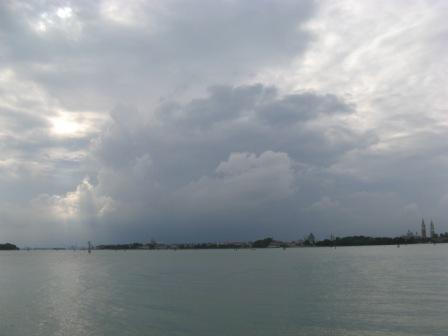
I love rowing at night. The sky gleams like black onyx and the darkness somehow makes it feel like you’re going really fast. There is almost no traffic (it’s not summer anymore, thank God) so the water is smooth and silky. It’s dreamy.
Then we had to cross the San Marco canal– sorry, dream over. There’s less traffic at 8:30 at night, but there are still waves, spawned by an assortment of vaporettos and the ferryboat and some random taxis, none of whom is likely to be looking out for any stray mascareta. Yes, we had a light. No, it wasn’t a floodlight. This created enough tension to inspire me to speed up. and we briskly made it across in only a few minutes.
Home free. And very sorry it was all over. And very ready to shut the door on today and turn on the shower. Boats are great but 12 hours in one is plenty.

